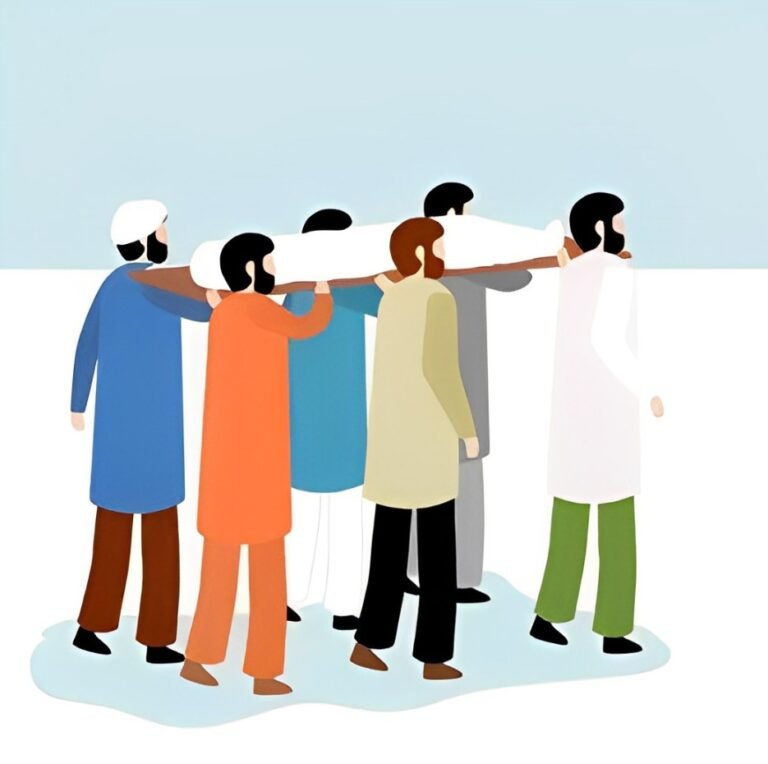The Hijrah Madina was a historic migration undertaken by the Prophet (PBUH) and his Companions that holds great significance in the annals of Islamic history. This transformative journey from Mecca to Medina provided refuge for Muslims and paved the way for the establishment of the first Islamic state. The Hijrah Madina proved to be a turning point in the development of Islam. Allowing the growth of the Muslim community and the spread of Islamic teachings. In this blog post, we will examine the details of this momentous event, exploring its profound impact on the faith.
In another blog, we discuss the Conquest of Makkah.
What is the Hijrah?
Hijrah is an Arabic term that means migration and emigration. Leaving one’s place to go to another place for the sake of Allah, the protection of religion, and the protection of faith is called Hijrah. Hijrah not only represents a physical journey from one city to another but also a symbol of spiritual and social change. It marked the transition from a small, oppressed community of Islam to a flourishing and influential Islamic state. The Hijrah Madina established a model of community and government based on Islamic principles and teachings.
Read our other blog on the Significance of Seeking Knowledge in Islam.
Hijrah in Islam
Hijra in Islam is a term used to describe the historical migration of Prophet Muhammad (PBUH) and his followers from Mecca to Medina in the year 622 AD. This event holds immense importance in Islamic history as it not only marked the beginning of the Islamic calendar. It also led to the establishment of the first-ever Muslim community and state. The migration is a well-documented event in Islamic history and is also explicitly mentioned in the Quran.
The migration to Medina provided a new beginning for Islam and allowed the Prophet and his followers to establish a new community based on their faith. This new community was based on a strong sense of brotherhood and equality. It provided a safe haven for the followers of Islam.
It is also explicit in the Quran;

As for those who emigrated in the cause of Allah after being persecuted, We will surely bless them with a good home in this world. But the reward of the Hereafter is far better if only they knew. [Surah Nahl verse 41]
Narrated Mu’awiyah:
I heard the Messenger of Allah (SAW) say: Migration will not end until repentance ends, and repentance will not end until the sun rises in the West.
[Sunan Abi Dawud 2479]
Hijrat-e-Madina
The Hijrat-e-Madinah, also known as the Migration to Medina, was an event of great significance in the history of Islam. It was initiated by the persecution and opposition faced by the early Muslims in Mecca. In order to establish the religion of Allah in a land where they could worship Him freely, Allah ordered the Muslims to migrate to a new place. Allah chose the city of Medina as the land of migration. According to Islamic tradition, the Messenger of Allah saw a dream in which he was migrating to this city, which was a clear indication of the divine will.
Read our other blog on the Prophet Muhammad (SAW): Life, Revelation, and Legacy.
The Prophet Muhammad (PBUH), along with his close companion Abu Bakr (R.A), embarked on this journey and faced numerous challenges along the way. They reached a cave in Mount Thawr and stayed there for three nights, seeking refuge and safety from their enemies. This cave holds great significance in Islamic history. It was a turning point in the life of the Prophet and marked the beginning of a new era for the Muslims.
The hijrah-e-Madinah not only gave refuge to Muslims but also allowed the establishment of a new Muslim community and state. The people of Medina warmly welcomed the Prophet and his followers, providing them with a safe and secure environment to live in. This led to the formation of the first Islamic state, with Muhammad (SAW) as its leader. It marked the beginning of a new era in Islamic history.
Hijrah Madina Purpose
The purpose of the Hijrah to Medina was to escape persecution and establish a new Muslim community and state. It marked a turning point in the establishment of Islam and led to the formation of the first Islamic state with Muhammad as its leader.
Escape from Persecution
Muslims faced severe persecution and hostility in Mecca, making it difficult for them to practice their faith freely. The Hijrah Madinah provided them with a safer and more supportive environment where they could freely spread and worship Islam.
Build an Islamic Community
When the people of Medina were struggling to resolve their disputes and establish peace in their city, they invited Prophet Muhammad to arbitrate and bring about a resolution. This led to the Hijrah Madinah, which allowed the Prophet to establish a just and harmonious society based on Islamic principles. By following Allah’s orders, Prophet Muhammad (PBUH) was able to build a Muslim community in Medina that served as a model for others to follow.
Development of an Institution
The construction of Masjid al-Nabawi (Mosque of the Prophet) in Medina served as a centre of worship, education, and government.
Hijrah Madina a turning Point for Islam
The Hijrah Madina was a turning point for Islam as it marked the transition from an oppressed and marginalized class in Mecca to the establishment of the first Islamic state in Medina. This migration allowed Prophet Muhammad (PBUH) and his followers to escape persecution and create a safe and supportive environment for the practice and spread of Islam. In Medina, Muslims grew in number and power, and the Prophet was able to establish a comprehensive social and legal structure based on Islamic principles. Hijrah Madina also expanded the prophetic mission, as the message of Islam reached a wider audience and gained acceptance among different crews and communities. Overall, the Hijrah Madina laid the foundation for the growth, development, and spread of Islam as a holistic way of life.
Why was the Hijrah Madina Important?
This significant event will change the world forever. Here are 10 important points about Hijrah Madina:
- It highlighted the steadfastness of the Prophet and the early Muslims in difficult times.
- It marked the beginning of the Islamic calendar known as the Hijri calendar.
- It was after the migration that Allah’s laws of justice and peace could be established.
- It is important in tracing and following important events, milestones, and trends in Islamic history.
- It shows that there is hope of ease after hardship for the believers.
- It was an occasion when Muslims of different backgrounds were united when brotherhood was established between the Muhajirin and the Ansar (helpers). The system of brotherhood and equality of Islam was demonstrated in practice.
- It launched the Islamic State, which would become a world power for centuries to come.
- It also marked the liberation of humanity from racism, inequality, and injustice globally.
- He took advantage of the warring communities of Yathrib (Madinah) and united them under one leader, paving the way for the unification of the Arabian Peninsula and beyond.
- It brought personal, social, and societal stability to the citizens of the region.
Lessons from the Hijrah Madina
The Hijrah Madina was a significant event in Islamic history, and it holds several essential lessons for us.
Trust in Allah
Hijra Madina demonstrated a firm belief in Allah and His promises. Reflecting on the Prophet’s journey with his companion Abu Bakr, he passed through many dangers and suffered as far as he reached, only to protect the Muslims and spread Islam.
Choose your Friends Wisely
This journey of Hijrah Madina is very long and tiring, and our life is a journey that will end after a while. We need a person, a friend, who taps us on the shoulder and comforts us with beautiful words of encouragement. This revives faith in our hearts, just as the Prophet (PBUH) told Abu Bakr in the cave of Thawr.
Believe in the Miracles of Allah that Happened During this Journey
As a Muslim, I firmly believe in the miracles of Allah that occurred during the Prophet’s journey of hijrah to Madina. Considered one of the most significant events in Islamic history, it marked the early Muslim community’s transition to safety and stability from persecution and hardship. During this journey, Allah performed several miraculous interventions to protect the Prophet and his companions from harm. This included causing a spider’s web and a pigeon’s nest to grow over the entrance of the Cave of Thawr.
It concealed their presence from their enemies.
These miracles are a testament to Allah’s power and mercy, and they continue to inspire and guide Muslims around the world. As Muslims, we believe that Allah’s miracles took place, and they ended at the end of the prophetic period. Allah protected the Prophet on this journey through a well-known image: the opening of the Cave of Thawr with a spider’s web and a pigeon’s nest. Many other incidents occurred and did not. Happened without a miracle from Allah.
Brotherhood in Islam
The Prophet Mohammed once migrated to a city called Madinah, where he found a community of Muslims who welcomed him. He believed in unity and encouraged everyone to treat their neighbours like family. He also urged people to help those who are less fortunate. We can learn from his migration to Madinah that, as Muslims and human beings, we should act as one. We should treat each other with kindness and compassion. Regardless of our origins, we are all part of the same community. We should always help and support each other.









